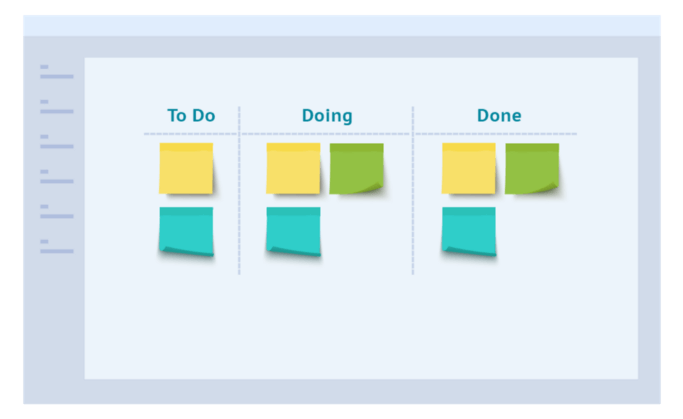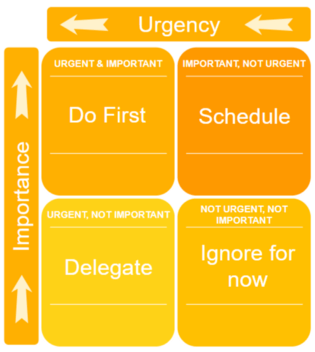今日推荐开源项目:《常用模版 RegexHub》
今日推荐英文原文:《Three Techniques for Time Management and Prioritization》

今日推荐开源项目:《常用模版 RegexHub》传送门:GitHub链接
推荐理由:常用的正则表达式合集。有的时候我们需要从规定格式的字符串中截取所需要的信息,而正则表达式就是一个不错的选择,这个项目提供了常见的需要使用正则表达式的场景——包括解析日期时间和油管视频 id 等等,在编写自己的正则表达式时可以作为参考和借鉴。尽管这玩意看起来复杂,学起来也不算很容易,但是在解析一定格式的字符串时它能比平时的方法更加方便。
今日推荐英文原文:《Three Techniques for Time Management and Prioritization》作者:Costas Andreou
原文链接:https://medium.com/better-programming/three-techniques-for-time-management-and-prioritization-9df6dffe2ff1
推荐理由:正确规划时间——一天只有 24 小时,而你总不可能只睡 3 小时
Three Techniques for Time Management and Prioritization
Learn how to manage your time effectively for career success
“My favorite things in life don’t cost any money. It’s really clear that the most precious resource we all have is time.” — Steve JobsWhen was the last time you thought about time management or prioritization? It generally isn’t something that people actively think about; and yet it is something we all do every day. From the moment we wake up to the moment we go to bed, we are constantly making decisions and prioritizing what we’ll do next.
In a professional setting, you’ll find yourself constantly prioritizing tasks. There’ll be a stream of incoming emails, meeting invites, chat windows, deadlines, and to-do list items, all competing for your time and attention. If you can prioritize things and allocate your time correctly, sooner or later you’ll find yourself moving up the corporate ladder. It’s often a key skill for management.
Getting Started
Often, the hardest part is to take the first step; to get started. It’s easy to get caught in the busy-ness of everyday life and chaotic work cultures with no structure.“Tomorrow is often the busiest day of the week.” — Spanish ProverbIn this blog, rather than simply present three different time management techniques, you’ll see how to implement each one and to combine them. This will give you a set of tools that you can use immediately.
Make a List
The first task of getting organized and honing your time management skills is to know and track all your outstanding tasks. When the list is small, it’s easy to remember it without writing it down. However, when you or your team have a big list of tasks, you need a way of tracking them without forgetting anything.That’s why it’s imperative that you create a list of all outstanding items and simply write them down. Just by doing this task, you’ll be making sure you’re aware of all your tasks and their associated deadlines.
This can be a paper or a digital list of items. Personally, I have a number of different lists. I have a personal to-do list, a work to-do list, and my team’s to-do list. Generally, when a number of people are affected or are tracking progress on tasks, then it makes sense to use an online list. I recommend setting up a Kanban board that everybody has access to. Trello offers a simple and yet powerful digital Kanban softwarehttps://trello.com
Kanban allows you to define different lanes representing the status of work, and you can drag your items across, giving everyone a real-time view. Here’s an example of a Kanban board below:

Compliments of digite.com
Eisenhower Matrix
If you’ve carried out the previous exercise, you now know the whole universe of items you need to address. We will call this universe — all the different lists — your work backlog.We can now work through this backlog to categorize and appropriately prioritize all of the items of work. One of the ways to do this is to use an Eisenhower Matrix.
“You can have it all. Just not all at once.” — Oprah WinfreyFor each item, you need to go through and make two choices. You need to decide whether they’re urgent, and/or whether they’re important.

If an item is:
- Important and Urgent, then it should be placed in the top left quadrant.
- Important but not Urgent, top right quadrant.
- Urgent but not Important, bottom left quadrant.
- Not Important and not Urgent, bottom right quadrant.
For those of you who are sole practitioners and don’t have anyone working for you, you might not be able to delegate. In that case, you start by addressing the Do-First items and afterward address the Delegate items. Another option is to consider hiring an online assistant to help you. See, for instance, platforms like Upwork.
Prioritize Your Urgent and Important Items
The Eisenhower Matrix allows grouping tasks in terms of priority and determines the high-level actions that should be assigned to them. The next task is to address the individual items within each quadrant.Take, for instance, looking at the Urgent & Important quadrant. Every single item needs to be addressed, fast. How to determine which one to tackle? First, try to understand what each item is all about, and figure out the work involved in completing each item. This should give you a sense of how much time each task will take.

Photo by Jiyeon Park on Unsplash
To begin with, attempt to see whether there are any quick wins. This must be considered on a task level, but also regarding the breakdown of a task. Imagine you have two tasks. One task would probably take all day, and the other one, two hours. It’s best to begin with the two-hour task to get it out of the way and delivered before moving on to the bigger task. The quick win gives good momentum and boosts confidence.
However, you may need some outside input to the big task requiring that you first send an email or make a phone call. Those actions are quicker than the smaller two-hour task, and if completed upfront, someone else will be working to send you the information you require while you’re on to a different task. That also means that you’ll be ready to start the bigger task as soon as you finish the other one, rather than sitting around waiting for information.
The Pareto Principle
The last thing to cover is the Pareto Principle, and how it can be used to your advantage. The Pareto Principle is known by many names, such as the 80/20 rule or the law of the vital few. This principle essentially states that for a given situation, 80% of the effects come from 20% of the causes.An example could be something like 20% of Medium writers produce 80% of the [good] content.
Knowing this principle, it’s time to learn to apply it. Let’s examine a few use cases.

Photo by Han Chau on Unsplash
Use case #1: 20% of the work delivers 80% of the value
Following from the Eisenhower Matrix and the quick wins, the Pareto Principle essentially advises that we could do 1/5th of the work and get 4/5th of the value. That could either be by only addressing a subset of the backlog, or by solving each item partially. Maybe you deliver the work in a draft state, rather than 100% completed.Use case #2: 20% of the root causes create 80% of the problems
Sometimes you may have some tasks which seem to be repeating themselves. It might be the type of problems you keep addressing, or the same group of clients causing most of the trouble.Whatever it is, it’s worth identifying the trend and solving the issue once and for all. To identify the root cause of a problem, it’s worth asking why five times in a row. The final answer tends to be the root cause of the problem.
Having used the Pareto Principle, you can then identify the best way to proceed with your workload to achieve the most out of your day, week, month or year!
I hope that you’ve found some or all of the above useful. Hopefully, you'll put these tips into practice and they work for you. Remember to persevere for a while whenever you’re trying out a new technique. It takes a bit of time to get the hang of it.
下载开源日报APP:https://openingsource.org/2579/
加入我们:https://openingsource.org/about/join/
关注我们:https://openingsource.org/about/love/
